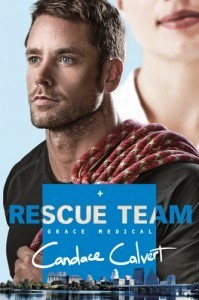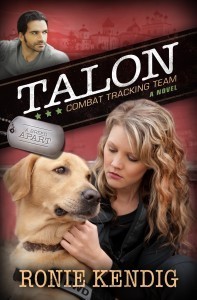Janice Cantore's Blog, page 3
November 1, 2013
Just The Facts Interview with: Candace Calvert
Years ago in the police academy, we were taught the five W’s and an H in police report writing. Who, what, when, where, why, and how were the questions to be asked in order to form the framework for a crime report. The best place to start an investigation is with the basic questions, or, ‘just the facts’. In the spirit of succinct report writing, I give you a new feature to my blog a ‘just the facts’ interview with interesting fellow writers and from time to time interesting characters. This months installment is Candace Calvert.
Who is Candace Calvert?
Candace Calvert is a native Californian, veteran ER nurse, mom, grandmother to seven, and wife to a man who looks so gorgeous in a tuxedo that she calls him “Mr. Bond.” Interests  include world travel, hiking, gardening, bird-watching, and whipping up fabulous new vegetarian recipes.
include world travel, hiking, gardening, bird-watching, and whipping up fabulous new vegetarian recipes.
What do you write?
I’m often called the “author of medical hope opera.” I write fast-paced and emotionally charged inspirational medical fiction. Lights, sirens, heart-tugging romance and a healthy dose of hope.
Why do you write?
TV medical shows rarely address issues of faith. I want to help “Grey’s Anatomy find its soul.”
When did the inspiration to write hit?
In childhood: I wrote stacks of journals, neighborhood plays, and loved essay assignments. Then in 1999 my husband signed me up for an online writing class, saying “Stop talking about writing a book and just do it.” Pushy, wonderful man.
Where do you set your stories?
In hospital settings, but the stories often go afield to urban clinics, search and rescue scenarios, as well as into disaster situations. I’ve set one series in California and one in Texas.
How did it all start?
My first published work (an essay in Chicken Soup for the Nurse’s Soul) was the inspirational account of a very serious equestrian accident that landed me “on the other side of the stethoscope” in my own ER.
The post Just The Facts Interview with: Candace Calvert appeared first on Janice Cantore.

October 15, 2013
Protecting Kids Against Predators
 Years ago when I was in college and renting an apartment with two other girls, we were burglarized. A window had been left open when we all left for the day and the thief crawled in, stole what ever he could stuff in his pockets and fled. He took change, some jewelry and a lot of peace of mind. We all felt so violated. One simple thing would have prevented the theft and the bad feelings, we should have closed the window.
Years ago when I was in college and renting an apartment with two other girls, we were burglarized. A window had been left open when we all left for the day and the thief crawled in, stole what ever he could stuff in his pockets and fled. He took change, some jewelry and a lot of peace of mind. We all felt so violated. One simple thing would have prevented the theft and the bad feelings, we should have closed the window.
Isn’t that how it often is? One simple common sense act can prevent a lot of problems.
The burglary came to mind as I was listening to a news report about a missing toddler. Apparently the parents left the toddler alone while they went to dinner. I’m not sure why they would do this, but when they came home the toddler was gone. Common sense would dictate that parents not leave young children home alone, wouldn’t it?
Protecting your children against predators and other bad things in this world often boils down to simple common sense. For very young children, watch them, never leave them unattended or with someone you don’t know or can’t trust. Make sure they know not to talk to strangers, even if the stranger claims he has a puppy to show them. (Often predators lure children into cars promising puppies or candy)
For older kids, know their friends, know their hangouts, talk to your kids and their friends. You don’t need to be overly nosy, but you do need to be involved and aware.
When I worked as a juvenile detective it always amazed me that often when people called to report their child missing and we asked a standard question, ‘who are their friends?’ the parent could not answer, they couldn’t name a single friend.
Writing this I think, a lot of parents are saying, ‘duh’, that’s parenting 101. Well, obviously it’s not because there are parents who seem to have no common sense and hundreds of children are victimized every year. Children are more precious than trinkets a burglar can stuff into his pocket after climbing through a window. A lot of heartache and pain can be avoided with a little common sense.
The post Protecting Kids Against Predators appeared first on Janice Cantore.

October 7, 2013
Just the Facts: Interview with Author Ronie Kendig
Years ago in the police academy, we were taught the five W’s and an H in police report writing. Who, what, when, where, why, and how were the questions to be asked in order to form the framework for a crime report. The best place to start an investigation is with the basic questions, or, ‘just the facts’. In the spirit of succinct report writing, I give you a new feature to my blog a ‘just the facts’ interview with interesting fellow writers and from time to time interesting characters. Here’s to hoping the basics will make you want to learn more. Special thanks to Ronie Kendig for being the inaugural interview.
Who is Ronie Kendig?
Ronie Kendig is a (ahem) forty-something mother of four who’s been married to her own hunky hero for twenty-three years. Ronie loves all things pumpkin, Texas, and Audrey Hepburn. Hobbies include crocheting, decorating, and light gardening. 
What do you write?
I write intense, clean military suspense that contains a romance thread. My brand is Rapid-Fire Fiction. That’s intense action, raw characters, and real life is what readers will find between the covers of a Ronie Kendig novel, along with a healthy dose of inspiration and hope.
When did the inspiration hit to write?
I’m not sure it ever hit me, or maybe it hit me so hard I lost the memory of it. I’ve been telling stories—whether through Barbie dolls or on paper—since I can remember. It wasn’t till roughly 2000 that my hunky hubby prodded me into attempting to get published.
Why do you write what you write (either genre or CBA)?
I write suspense/action because it’s what I love to read and watch (movies). I write for the CBA market because I have felt that is where I was supposed to be. There is also the concern that elements of faith and hope in God (which are in my stories, in varying degrees) would not be allowed outside the CBA market.
Where do you set your stories?
Not to be facetious, but I set them where the action is.  For the most recent series, it’s set primarily in Afghanistan because the team the Quiet Professional series is about are Special Forces/Green Berets (nicknamed the Quiet Professionals).
For the most recent series, it’s set primarily in Afghanistan because the team the Quiet Professional series is about are Special Forces/Green Berets (nicknamed the Quiet Professionals).
How did it all start?
It started, I suppose, as a sort of therapy. It was my downtime, my way of “getting away” when our family was too young and poor to afford trips to beaches and the like. Writing is still my therapy.
The post Just the Facts: Interview with Author Ronie Kendig appeared first on Janice Cantore.

September 17, 2013
Judgment and Police Shootings
 “Police Accidentally Shoot Two Innocent Bystanders Near Times Square, Fail to Actually Hit Suspect”
“Police Accidentally Shoot Two Innocent Bystanders Near Times Square, Fail to Actually Hit Suspect”
I read that headline and had to click the link and read the entire article. The gist of the piece is that police officers were confronted by an emotionally disturbed man who pretended to have a gun in a crowded area (Times Square no less) and they made the judgment call that they needed to use deadly force. Obviously it was the wrong call as two innocent people were injured and the disturbed man was eventually taken into custody with a taser.
I’m not posting this to second guess the officers, I’m simply making some observations. People make judgment calls at work all day long, but there are not a lot of professions where the wrong call can take a life or seriously injure someone. And even fewer professions garner headlines and breaking news stories and millions of armchair quarterbacks jumping in with opinions when someone makes a bad judgment call.
The situation is tragic for all involved, but I feel for those officers because I know that they have probably been involved in many other life threatening situations where they made good judgment calls and everything came out right. Those incidents will rarely be headline news.
It is a sobering responsibility to be trusted with a gun and the obligation that comes with it. I never had to use my firearm, but the one time I came close could have ended just as ugly as this incident in New York. My partner and I were being threatened by a man with a gun. Neighbors had called 911 because he was on his porch with a hand gun. When we arrived the man was indeed waving a handgun around in a threatening manner. My partner and I took cover and confronted him, ordering him to drop the gun. It was tense for several long minutes and we might have been justified in shooting him. He was a threat not only to us but to his neighbors. (And we were never trained to shoot to wound, if we had shot it would have been to stop the threat and that means aim for center mass)
But both of us patiently waited for an opportunity to safely approach and take the gun away and arrest the man without incident. Turns out the man was very drunk and the gun was inoperable. Am I glad I didn’t pull the trigger? You bet. Do I also recognize that it could have been an entirely different situation if the gun had worked and he had fired while we waited and hurt someone? Sir, yes, sir.
Most of the time when officers are confronted with life threatening danger they don’t have the luxury of time. They have a split second to make judgment call that could make them a hero or a bad guy. I pray for those guys in New York as I pray for all police officers. It’s a tough job in a world that seems to get more dangerous by the hour and they need wisdom to make the good call.
The post Judgment and Police Shootings appeared first on Janice Cantore.

August 20, 2013
A Simpler Time – Growing up in Mayberry
 Over the years there have been several kids rescued after they’d been kidnapped and held for several years by their kidnapper. Most recently, the three women rescued from the “house of horrors” in Cleveland come to mind. Thankfully, there are a lot of names of the rescued I could list, which doesn’t balance out those who have been lost, but it does give hope for those still missing.
Over the years there have been several kids rescued after they’d been kidnapped and held for several years by their kidnapper. Most recently, the three women rescued from the “house of horrors” in Cleveland come to mind. Thankfully, there are a lot of names of the rescued I could list, which doesn’t balance out those who have been lost, but it does give hope for those still missing.
My new book, Critical Pursuit, is about a police officer whose mission it is to find kidnapped and missing children. Her back-story is that she herself was kidnapped at a young age but rescued and brought home safely.
Writing about Brinna Caruso and her adult mission to protect children from predators who seem to be everywhere now a days, made me reflect back on my own childhood and give thanks that I was raised in a simpler time. As a kid I remember riding my bike everywhere. I had a sting-ray with a banana seat and u-shaped handle bars. I’d chase the ice cream man from block to block.
After we moved from a flat neighborhood to one with hills too steep for racing around on bikes, I rode horses. I can remember riding by myself on fire roads for hours, with my dog following along. I don’t remember worrying about predators or bad things happening.
Fast forward many years, when I worked in Long Beach I bought a house in a quiet neighborhood near El Dorado Park. The neighbors two doors down were quick to come introduce themselves. Yes they were welcoming, but they also wanted to know who the new person was because they had a young daughter they were vigilant in protecting. Wise parents, but a little sad that the world is the way it is now. Most kids don’t live where they can roam freely without fear of a park pervert and parents are justified and required to be vigilant.
I recently moved out of California to a small town in Oregon where I was surprised to discover my neighborhood is a place like the one I remember growing up in. Kids ride their bikes in the street, they play football, ride skateboards and toss balls around. Little girls have knocked on my door asking if they can walk my dogs. All in all it feels safe and old fashioned. I know that the parents are no less vigilant, but it’s great being in such a neighborhood and seeing kids laugh and play unburdened by worries of a dangerous world.
If you feel the need to help keep kids safe, please visit the National Center for Missing And Exploited Children for tips and information on how to help.
http://www.missingkids.com/home
The post A Simpler Time – Growing up in Mayberry appeared first on Janice Cantore.

August 13, 2013
One More Trip (Re-Post in Honor of my Mom)
 I suppose that when a loved one passes, those left behind often have a “one more” wish. One more talk, one more hug, one more day, etc. For me when I learned my mother’s cancer was out of control, my one more was one more trip.
I suppose that when a loved one passes, those left behind often have a “one more” wish. One more talk, one more hug, one more day, etc. For me when I learned my mother’s cancer was out of control, my one more was one more trip.
My mother was an inspiration to me in so many ways. She loved her family, she loved life, she appreciated things, even small, insignificant things and she loved to travel. My sister and I were the youngest and when we moved out of the house mom’s travel plans switched into high gear. Since my dad didn’t have the same desire mom joined clubs, the Sierra Club and Canyon Explorers so she’d have travel companions. She learned to ski and backpack in her sixties and embraced both pastimes with passion. Over the years she backpacked Mt Whitney, skied in California, Colorado, Oregon, Montana, Canada, and Switzerland. Rode her bike in Alaska and enjoyed every journey. She kept in touch with this group for years, often telling stories about their travels and the great times everyone had.
Later, when I graduated from college, I became a travel companion. Mom and I made annual ski trips to Mammoth and summer trips to Oregon. She was always looking forward to the next trip, had one planned with her club in May of 2013. I had a trip planned with her to Hawaii in November of this year. But the cancer cancelled those plans and my one more trip with my mom was not to be.
Over the years, mom rarely complained, took care of my father who often complained and made the house I grew up in a home in every sense of the word. I would come home for Sunday dinner and she would be in her element fixing something special, whether it was just my dad and me or I’d brought friends. Every Thanksgiving for 40 years it was my mother’s pleasure to fix a big dinner for family, extended family, and anyone else who happened along. Some of my fondest memories are of those Thanksgivings and my mother’s meals. She cooked with love.
As age began to catch up with her she endured two knee replacements, a broken hip, a hernia operation and a minor stroke. (After her second knee replacement, at the age of 86, she asked the doctor if she could go skiing again. He said no and she was crushed)
After she passed I found a saying she kept on her desk. She’d typed it on a small card and then laminated the card. It reads,
“Clock of Life. The clock of life is wound but once and no one has the power to tell just when the hands will stop, on what day, or on what hour. Now is the time you have so live it with a will. Don’t wait until tomorrow the hands may then be still.”
My mom didn’t wait and she lived a long and glorious life. We knew she had cancer, had known for about a year. But until it began to rob her of breath my mom kept living, planning and being a shining example of a mom.
One of my mother’s favorite stories to tell of my dad was that when they met, he followed her home on the bus. A little over three months later they were married and that marriage lasted 68 years until his death. The end of the story today is that a little after three months my mom’s last trip was following my dad home and there they’ll be together for eternity.
I miss you and I love you Mom and look forward to seeing you again in heaven.
The post One More Trip (Re-Post in Honor of my Mom) appeared first on Janice Cantore.

June 26, 2013
What Makes a Monster
 After the recent shooting in Santa Monica, http://usnews.nbcnews.com/_news/2013/06/09/18865467-santa-monica-shooting-spree-suspect-identified-as-death-toll-climbs?lite, a friend of mine confessed to being concerned about her grandson. He’s in his early twenties and is diagnosed as bi-polar. She lamented, “All these troubled young men going on rampages.” Would her grandson be next?
After the recent shooting in Santa Monica, http://usnews.nbcnews.com/_news/2013/06/09/18865467-santa-monica-shooting-spree-suspect-identified-as-death-toll-climbs?lite, a friend of mine confessed to being concerned about her grandson. He’s in his early twenties and is diagnosed as bi-polar. She lamented, “All these troubled young men going on rampages.” Would her grandson be next?
My friend’s grandson is not violent or prone to violence, nor does he have any fascination with guns. But the conversation made me wonder, just what does cause a young man to cross the line from troubled to mass murderer? There are a lot of people of all ages who are diagnosed as bi-polar or with some other mental problem and they don’t pick up guns and shoot a lot of people. What makes a monster?
Is the culprit mental illness? In 1949 a WWII vet shot and killed 13 people. Back then they said he was insane and he was sent to an asylum.
Is the culprit bullying? In 1999 two young men shot up a high school in Colorado and killed 13. They had grievances and claimed they’d been bullied.
Is it unfairness at work? The phrase ‘going postal’ has its origins in some nasty workplace killings.
Is the problem bad parenting? Drugs? Alcohol? Access to guns? The questions could go on and on. The problem is that the mass shooters usually end up dead so they can’t be asked what their major malfunction was.
By all reports the young man in the Santa Monica shooting was troubled for a long time, people knew he’d eventually do something bad. If people had known exactly what he was planning, I’m certain he would have been stopped. But the problem is no one really knows what someone is capable of until it is far too late to do anything about it.
Part of me wishes we could just say that these mass killers were possessed. It would answer all the questions and take away all human responsibility.
I saw a post on Facebook the other day: “Cain killed Abel with a rock, it’s a heart problem, not a gun problem, Jeremiah 17:9.” Some would probably say that this is too simplistic. But when something goes so wrong with a person’s heart to where they are convinced they need to kill, I’m not certain anyone other than the person or anything other than his/her actions can be blamed. It’s not the cause or the weapon it’s a major malfunction in the heart.

May 22, 2013
Human Trafficking
 The other day I listened to a message given at a church in Florida. At the beginning a young girl gave her testimony about how she was brought here to the US from Mexico by human traffickers when she was only 17 years old. The pastor was visibly moved to think that in this day and age, here in the United States, a young girl could be brought against her will and sold for sex. Unfortunately it is all too common. According to Humantrafficking.org, It is estimated that 14,500 to 17,500 people, primarily women and children, are trafficked to the U.S. annually.
The other day I listened to a message given at a church in Florida. At the beginning a young girl gave her testimony about how she was brought here to the US from Mexico by human traffickers when she was only 17 years old. The pastor was visibly moved to think that in this day and age, here in the United States, a young girl could be brought against her will and sold for sex. Unfortunately it is all too common. According to Humantrafficking.org, It is estimated that 14,500 to 17,500 people, primarily women and children, are trafficked to the U.S. annually.
When I was still working in law enforcement I saw a training video that told the story of an apartment complex turned into a virtual prison by traffickers. They brought laborers to the US illegally and then kept them in apartments, only letting them out to work and even then they were closely monitored. They even set up a company store in the apartment complex for the captives to shop, but they charged exorbitant prices, basically taking the little money back that they paid the captives for their day labor. The apartment complex was not out in the boonies, it was right in the middle of a normal neighborhood.
The traffickers often prey upon the poor and the struggling. They promise them high paying jobs in countries like the US, Italy, France, Germany, etc. The victims often leave their home countries willingly with the trafficker, but once they get to the desired country, the trafficker will confiscate the victim’s ID and papers and keep them confined, unable to do anything but what the trafficker wants. Traffickers tell the victim that the police can’t be trusted, they are in the country illegally so if they complain to anyone they will go to jail.
In this country even if a victim of trafficking is here illegally, they will be treated as a victim and given a safe place to stay, in a shelter of some kind, until hopefully, the trafficker is prosecuted. Law enforcement tries to get the message out that being the victim of human trafficking is not a crime, it’s the trafficker who needs to go to jail. Human trafficking is modern day slavery. And just like a trafficking operation may be set up in a normal neighborhood, a trafficker is not always a shadowy criminal. I got this from the FBI website (http://www.fbi.gov/news/stories/2013/... month, a Kentucky cardiologist and his ex-wife pled guilty to recruiting a Bolivian woman to work as their domestic servant and holding her unlawfully for nearly 15 years. The couple took her passport, threatened her with deportation, and falsely promised that her wages were being put in a bank account.”
Also from the FBI website, there are resources if you have information or suspicions about a situation near you. “If you believe you are the victim of a trafficking situation or may have information about a potential trafficking situation, call the National Human Trafficking Resource Center (NHTRC) at 1-888-373-7888. NHTRC is a national, toll-free hotline, with specialists available to answer calls from anywhere in the country, 24 hours a day, seven days a week, every day of the year related to potential trafficking victims, suspicious behaviors, and/or locations where trafficking is suspected to occur. You can also submit a tip to the NHTRC online.”

May 3, 2013
The Existance of Evil and the Fight to Stop It
 Writing suspense novels is writing about the constant battle between good and evil. The bad guy does something horrible and the hero must find him and bring him to justice. Sometimes it’s a cat and mouse game. The hero knows the bad guy is up to evil, and the puzzle of a story comes together as the hero races time to stop the evil from happening. Unfortunately, if the hero were always able stop the bad guy before the horrible thing happened, there would be less of a realistic ring to the story. It real life it’s profoundly more unfortunate that the heroes in law enforcement today, despite their best efforts, cannot always stop the horrible, the evil. And, I believe that the bombing of innocent people at the Boston marathon (or anywhere) constitutes evil.
Writing suspense novels is writing about the constant battle between good and evil. The bad guy does something horrible and the hero must find him and bring him to justice. Sometimes it’s a cat and mouse game. The hero knows the bad guy is up to evil, and the puzzle of a story comes together as the hero races time to stop the evil from happening. Unfortunately, if the hero were always able stop the bad guy before the horrible thing happened, there would be less of a realistic ring to the story. It real life it’s profoundly more unfortunate that the heroes in law enforcement today, despite their best efforts, cannot always stop the horrible, the evil. And, I believe that the bombing of innocent people at the Boston marathon (or anywhere) constitutes evil.
But there is a bright side. Since 9/11 law enforcement has been able to stop roughly 45- 51 attempts at terror attacks in this country(Heritage Foundation By James Jay Carafano, Ph.D., Steven P. Bucci, Ph.D. and Jessica Zuckerman April 25, 2012). Federal authorities have been vigilant in trying to keep this country safe. So often we never even hear of how some horrible evil has been averted. I wanted to list a few that were stopped in order to acknowledge the hard work of the law enforcement community.
May 2007 – Six men were arrested in a plot to attack Fort Dix, a US Army post in New Jersey.
July 2009 – Raleigh Jihad Group – a group of seven men in North Carolina were arrested on charges of conspiring to support terrorist groups abroad and plotting an attack on the US Marine base at Quantico, VA.
September 2009 – Michael Finton was arrested attempting to detonate a car bomb filled with explosive outside the Paul Findley Federal Building in Springfield Illinois.
May 2010 – Faisal Shahzad attempted to detonate explosives in an SUV parked in Times Square. The bomb did not detonate and he was arrested attempting to flee the country.
November 2011 – Jose Pimental was arrested on charges of planning to use pipe bombs to attack targets throughout New York City.
February 2012 – Amine El Khalifi was arrested on charges of plotting to attack the US Capitol. He was arrested after he left his car parked with guns and a bomb.
Just a handful of thwarted attacks out of many, but hundreds, maybe thousands of lives saved. Years ago, when I worked graveyard patrol and I’d drive through quiet neighborhoods at 2 or 3 in the morning, my goal was protect those neighborhoods, to look hard and carefully and stop and investigate anything that looked out of place. Now, long retired, I sleep well knowing there are police officers out there still rolling through quiet neighborhoods on patrol. On a larger scale, this country is being protected round the clock by thousands of diligent officers, determined to stop evil. Yes, it’s tragic that all of the evil can’t be stopped, but it’s heartening to know that while we sleep, law enforcement officials are out there working tirelessly to stop everything they can.

April 18, 2013
Unsung Heros – The Heart of a First Responder
 Watching the coverage of the Boston bombing reminded me of how much work goes into responding to tragedy whether it’s a natural disaster or a man made disaster. And it reminded me that a lot of people contribute to a successful ending and not all of them will be recognized for their help, their sacrifice, or their quick thinking. First responders bring order to chaos and ease to suffering. In Boston so many people on the scene jumped into action to help immediately. Some were first responders, some weren’t. A lot were people who saw a need and rushed to fill it with out concern for their own safety. There’s a story going around about a spectator jumping right in and applying first aid to a man whose legs were blown off and saving his life.
Watching the coverage of the Boston bombing reminded me of how much work goes into responding to tragedy whether it’s a natural disaster or a man made disaster. And it reminded me that a lot of people contribute to a successful ending and not all of them will be recognized for their help, their sacrifice, or their quick thinking. First responders bring order to chaos and ease to suffering. In Boston so many people on the scene jumped into action to help immediately. Some were first responders, some weren’t. A lot were people who saw a need and rushed to fill it with out concern for their own safety. There’s a story going around about a spectator jumping right in and applying first aid to a man whose legs were blown off and saving his life.
Whenever something happens that requires emergency response, I learned quickly when I was very new on the job, most cops and fire fighters just want to help. They do what their training has taught them without the need for accolades or pats on the back. They have to wade through the worst that can happen can happen in this world and they just move forward. Sometimes the heart of a first responder also resides in people on the street, the man who runs into a fire to save a neighbor, the person who helps a victim at an accident scene, they step in because they know something has to be done, there is a need to bring order to chaos, help to the hurting. And it’s very rare they will be thanked in a manner commensurate with their contribution.
And when the initial horror is over there are the first responders who have to switch gears and investigate. People see snippets of what goes on in a complicated investigation but not the entire laborious process. The officers and agents in Boston had a horrific crime scene to deal with. They had to process everything quickly, efficiently, and without any errors that could accidentally free the perpetrator. Long after the cameras were gone they put in hours and hours of hard work, sifting through blood, pain, videos, horror, pictures and tips. As I write this, two days later, reports are that they already have a suspect. Catching the person responsible for the carnage may not bring the dead back but it will go a long way to helping people heal, helping people feel normal in their lives again.
No one wants to see a tragedy like what happened in Boston, but when one does, I thank God for those people, whether in uniform or not, who have the heart of a first responder. Often they are unsung heroes and this is my small way of singing their praises. God bless them.






